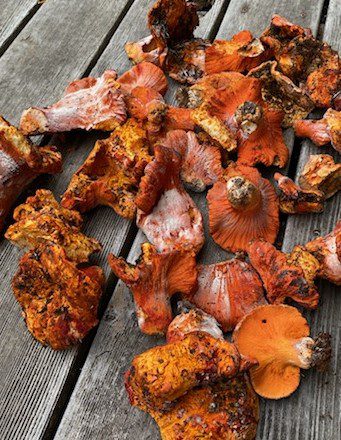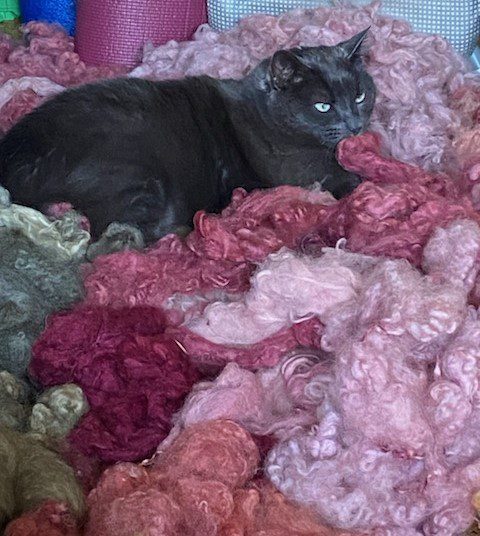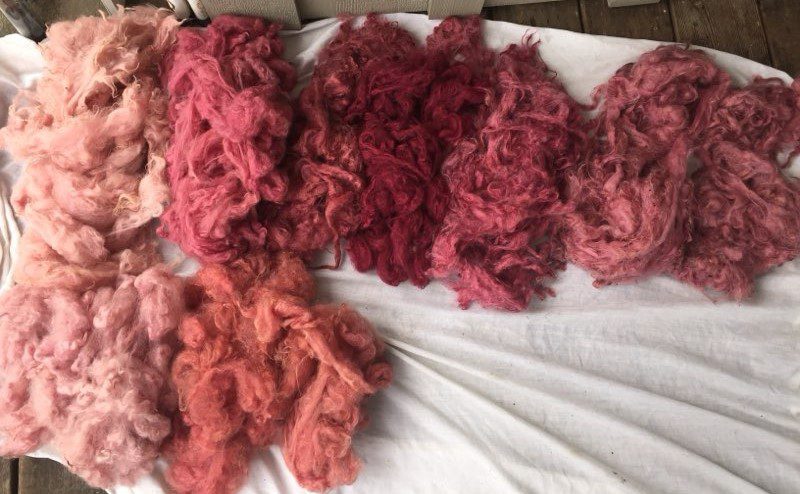Courtenay-based fibre artist and mushroom forager Amy Crook brings us another great tutorial on dyeing with materials we can find in our Fibreshed region. This time, she explores lobster mushrooms and generoulsly shares some tips and tricks for getting good colour from them.

by Amy Crook
This is an exceptionally productive year for lobster mushrooms (Hypomyces lactifluorum). They are one of my favorite dye mushrooms because they are interesting biologically and give a wide range of colours.
Hypomyces lactifluorum is a fungal parasite that grows on the host mushroom, Russula brevipes, a plain white mushroom. When R. brevipes is infected with the Hypomyces fungus, it is transformed into the sought after lobster mushroom. The flesh of the lobster mushroom remains white while a bright orange crust develops over the outside of the host mushroom.
Lobster mushrooms give lots of colour, but dyeing with them is a bit complex. Here’s some of my best suggestions for success.
It is important to mordant your protein-based fibre (wool, alpaca, silk) with alum before you dye. For silk, I’ve found that mordanting at 15% weight of fibre (WOF) is best, while wool and alpaca are best with 5-7% WOF.
With most species, the whole mushroom is used in the dye pot. But with lobster mushrooms, using only the orange layer strengthens the dye results. Dyeing with whole mushrooms seems to decrease dye potential. The peels can be used fresh or dried, giving similar results. Sometimes the peeled mushrooms will “re-orange” if left in the shade, giving twice the dye potential from each mushroom. The really old magenta colored mushrooms give the best colour but are very smelly. Fair warning.

Simmer the peelings at 140-150 F for about an hour. The dye bath is…. fragrant, so do your dyeing outside. I put wet fibre in a porous bag to separate it from the mushrooms in the dye pot.
Changing the pH of the dye bath creates a great variety of colours; acidic pH 3-4 (vinegar) gives a peachy coral while basic pH 9-10 (washing soda) gives deep rosy magenta to burgundy. A ratio of 2:1 weight of mushroom to fibre works well. The pH adjustments can be done in the dye bath or as an after bath. Leave the fibre in the dye pot overnight if possible. It helps deepen the colour. Be sure to have pH paper available that ranges from 3 to 10, at least.
It’s very important to rinse the dyed fibre with a pH neutral soap. All future washes should be done this way too.
Wishing you lots of fun and awesome colour results.

